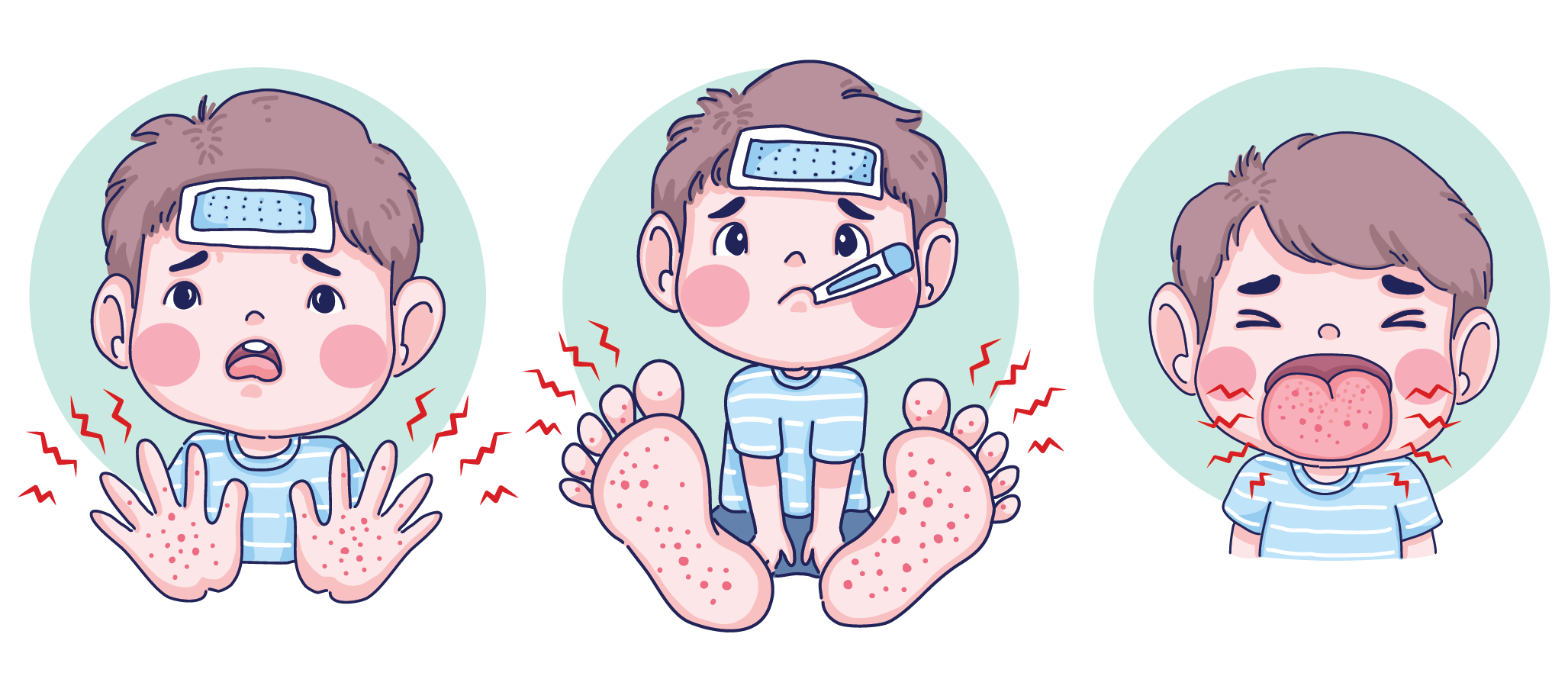The Hand, Foot and Mouth Disease (HFMD) is considered an endemic disease in Malaysia as it tends to manifest sporadically in mass outbreaks, predominantly affecting young children. This year alone, between January 1 and June 18, a total of 106,477 cases have been reported, marking a 39-fold increase compared with the same period in 2021 which recorded only 2,710 cases.
In this segment, we slide HFMD under the microscope as Dr Melanie Majaham, Consultant Paediatrician – Sunway Medical Centre Velocity sheds light on the disease, its symptoms, treatment and prevention methods.
Cleanliness is next to godliness, goes the age-old adage. And indeed so. If there’s anything we have learnt these past few years since the menace that is Covid-19 turned world economies and lives topsy-turvy, it’s that it all boils down to prevention – prioritizing cleanliness is the key to keeping Covid-19 steadily at bay.
And that rings true for a string of diseases endemic in Malaysia, including the Hand, Foot and Mouth Disease (HFMD), rearing its ugly head in an alarming way of late with Selangor having documented 29,880 cases (at press time), followed by Kuala Lumpur and Putrajaya with a collective 11,687 cases, Perak 10,938 cases, Johor 7,052 cases, and Kelantan 6,532 cases.
Eighty-nine percent of these cases involved children aged six and below, with 56% reported having occurred in nurseries, kindergartens and pre-schools, followed closely by private residential units (40%) and child care centres (3%).
What is HFMD, and how does it present itself?
Hand, Foot and Mouth Disease (HFMD) or ‘enteroviral vesicular stomatitis with exanthem’ is a common viral infection that affects, as the name clearly suggests, the hand, foot and mouth. It leads to rashes on the hands and feet that may be red spots or blisters, which can sometimes be confused with chicken pox. One of the hallmarks of the condition is extensive multiple ulcers that can be seen on the roof of the mouth, tongue and lips.
Causes and early symptoms
HFMD is commonly caused by the Enterovirus Coxsackie A-16 and EV-71. Coxsackie A16 tends to lead to a more benign course, and thankfully is the type most often seen here in Malaysia. Severe HFMD that leads to brain and heart inflammation and mortality is usually associated with E-71.
Who are susceptible?
Young children below age 5 are usually more prone to contracting HFMD. However, adults and older children can also be affected.
HFMD – common or seasonal?
The disease is generally endemic in Malaysia, previously seen to peak during the Southwest Monsoon season particularly between January and March, usually coinciding with the opening of the new school term. However, following the Covid-19 pandemic, we have seen a rather exaggerated increase of cases this year, which is likely due to the opening of borders and the sudden movement of people across states, the reopening of physical schools and daycare, which create a domino effect leading to a marked increase of all common childhood infections, including HFMD.
Is it contagious?
HFMD spreads easily via contact with respiratory droplets, saliva, fluids from the blisters and infected feces. It is usually most contagious during the first week of symptoms. However, less commonly, a child can remain infectious for weeks after recovery.
The stages of HFMD
HFMD usually starts with vague non-specific symptoms such as fever, lack of appetite, sore throat and tiredness. At this stage, it mimics any viral infection. Subsequently, 1 to 2 days later, the child will develop spots or blisters mainly on the hands and feet, as well as multiple painful oral ulcers. In severe cases of HFMD, the child may develop encephalitis (inflammation of the brain) and myocarditis (inflammation of the heart).
Quick cure?
There is no specific cure for HFMD. For mild HFMD, treatment is prescribed mainly to relieve the symptoms of the condition until self-recovery. Children who have the red flags (as described below) will need more specific medical care depending on the severity.
Recovery period
Most children will recover within a week. They should remain isolated from the school/daycare for 10 days from the beginning of the symptoms. The child should be fully recovered from all symptoms prior to returning to school.
Where are children most exposed to HFMD?
HFMD tends to cause outbreaks in daycare centres or kindergartens as these are places where young children spend long hours together in close proximity.
Could your child have HFMD? What is your next course of action?
First of all, ensure correct diagnosis by bringing your kid to a health professional. If the child is otherwise active and drinking/eating well, he or she can be treated at home with fever medication and oral sprays to soothe the ulcers. There are some oral sprays for pain relief that are available to reduce mouth pain and enable the child to eat. Although the rash tends to be harmless, occasionally creams containing zinc oxide is used to provide a “cooling” effect on the skin for the child’s comfort.
Should the child develop red flag symptoms such as fatigue, drowsiness, refusal to drink, persistent high fever beyond 48 hours, reduced urine, fast breathing and fits, the child needs to be brought immediately to a hospital for further treatment. These children may require intravenous (IV) fluids and further investigation. Although most children only have mild symptoms, there is a severe version of HFMD that can lead to brain and heart inflammation; although uncommon, these children need to be diagnosed early and get intensive care.
Can Pregnant Women And Their Unborn Babies Contract HFMD?
Pregnant women who are close to their delivery due dates may be at risk of passing the infection to their baby. HFMD in a newborn can be more severe and may even be fatal. It is best, where possible, for pregnant women to avoid all contact with HFMD patients.
Prevention
A diligent practice of hand hygiene coupled with surface sanitization is the best way to avoid HFMD. Hand hygiene is especially important after contact with feces (eg when changing diapers) and after sneezing or coughing. The use of face masks do play a role in preventing the spread of respiratory droplets. Also, it is best to avoid crowded areas as much as possible.

Consultant Paediatrician,
Sunway Medical Centre Velocity



